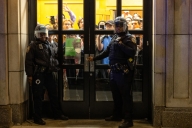You have /5 articles left.
Sign up for a free account or log in.
The Hispanic population in the U.S. has made significant gains in college enrollment and educational attainment since 2005, according to recently released U.S. Census Bureau data.
Over half of Hispanic people between the ages of 25 and 34 had attended some college by 2021, up from just a third in 2005. Over that time period, the number of Hispanic people with a high school degree rose 28.3 percent, and the number who attended some college increased 76.5 percent. Those with a bachelor’s degree or higher rose 145.2 percent, a jump from fewer than one million people to 2.2 million.
Hispanic students also now make up a greater share of those enrolled in college. The number of Hispanic students, ages 18 to 24, rose to 2.4 million in 2021, compared to 1.2 million in 2005. Hispanic students made up nearly 20 percent of students in that age group in 2021, relative to a low of 11.4 percent in 2006.
The share of 18- to 24-year-olds enrolled in higher education grew across all Hispanic subgroups from 2005 to 2021, the data showed. Bachelor’s degree attainment also became more common across all subgroups. However, growth trends did vary by group. Cubans and South Americans, who had comparatively high levels of college enrollment in 2005, made modest enrollment gains over that time period. These groups also had the highest levels of bachelor’s degree attainment throughout the 16-year period.
Other groups with initially lower levels of enrollment made significant gains between 2005 and 2021. The Mexican population had the most enrollment growth, a 12-percentage-point increase. Puerto Rican, Dominican and Central American populations also had enrollment increases of 7.5 percentage points or higher. Bachelor’s degree attainment for Mexican and Central American groups also rose 10 percentage points, with similar gains among Puerto Rican, Dominican and other Hispanic groups.









